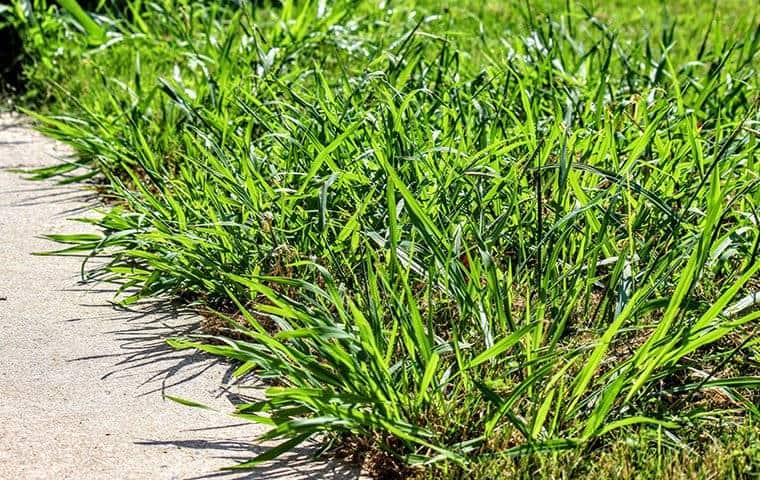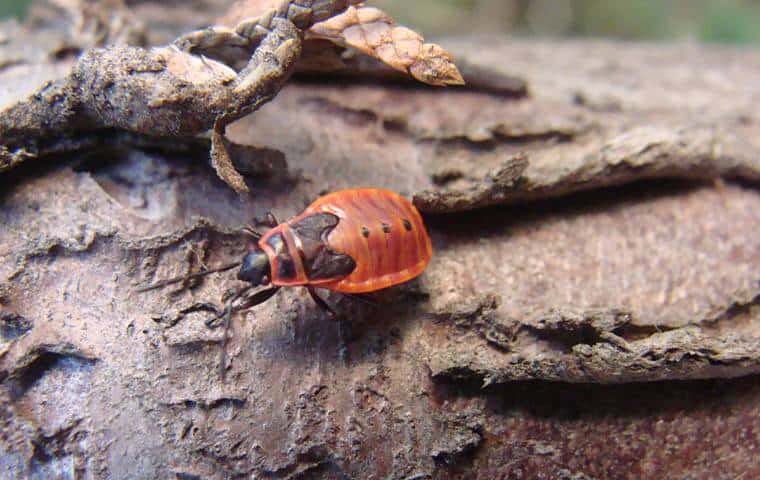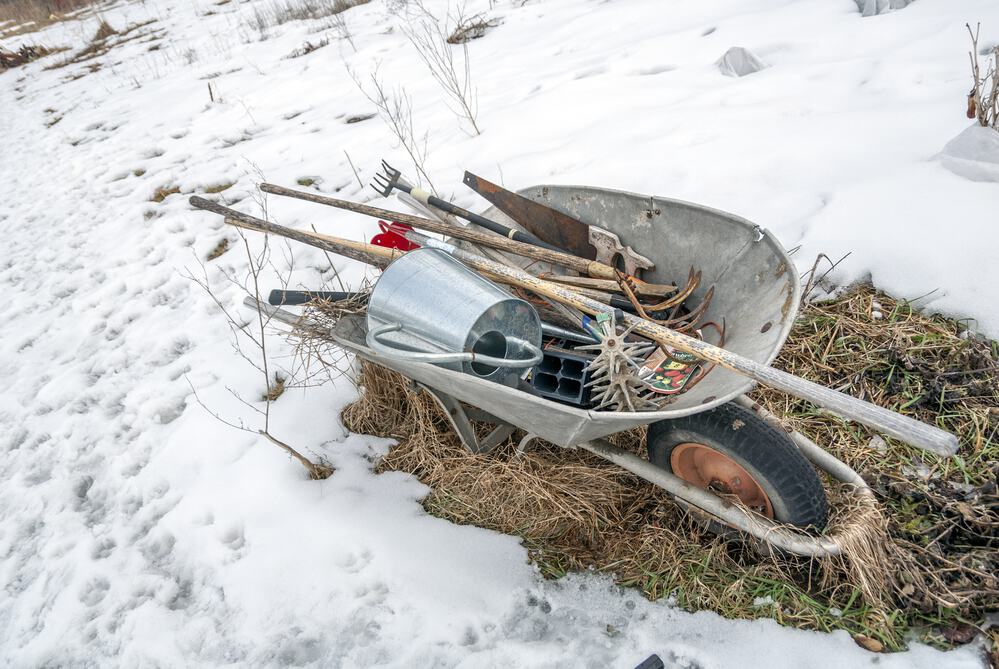There’s nothing quite like the sight of a majestic tree adorning your landscape. But when those once-vibrant leaves start to wither and branches turn brittle, it’s a sign that your tree might be in trouble. Diagnosing the health of your tree early can make all the difference between losing it completely and giving it a fresh start on life.
Revitalizing a dying tree isn’t just about restoring its beauty; it’s also about enhancing the overall health of your garden or yard. Healthy trees provide shade, support wildlife, and even boost property values. By addressing issues promptly and following proven techniques, you can save your tree and bring your withering giant back to its former glory. Read on as we guide you through seven practical ways to save your tree and breathe life into your struggling tree.
Assess the Signs of a Dying Tree
Before taking any action to revive a dying tree, it’s crucial to accurately assess the extent of the damage. Start by closely examining the tree for visible signs of distress. Leaf discoloration is one of the first indicators something might be wrong; yellowing or browning leaves, premature leaf drop, and wilting are red flags. Additionally, inspect the bark for abnormalities such as cracks, splits, or peeling. If you notice areas where bark is falling off or discolored patches that seem unusual, these could be symptoms of underlying issues that may indicate your tree is dying.
Once you’ve identified possible signs of distress, move on to determining whether the damage is reversible or irreparable. Trees have remarkable resilience but knowing when it’s too late can save time and resources. For instance, if more than half of the branches are dead or if there’s significant structural damage to the trunk, recovery may not be feasible. However, minor issues like localized pest infestation or nutrient deficiencies are often manageable with proper care and intervention.
When in doubt about your tree’s condition, consulting a certified arborist can provide valuable insights and guidance to help save your tree. Arborists have specialized knowledge and tools to diagnose problems that might not be apparent to an untrained eye. They can recommend tailored solutions ranging from specific treatments to advice on whether it’s best to remove the tree altogether. This expert opinion can make all the difference in ensuring your efforts lead to a successful revival rather than continued decline—saving both your landscape and peace of mind in the process.
Proper Watering Techniques Around the Tree
Ensuring consistent watering schedules is crucial for the health of any tree, but it’s especially critical when you’re trying to revive a dying one. Different species have varying water requirements; for instance, a spruce tree needs less frequent but deeper watering compared to a maple tree that requires more regular hydration to help save the tree. Tailoring your watering schedule to both the species and season will ensure that your tree gets the necessary moisture without overdoing it. During dry summer months, consider using a soaker hose or drip irrigation system, which provides deep, even soaking with minimal water waste.
Overly wet or dry soil conditions can further stress an already weakened tree. If you find water pooling around the base of your tree after rain, it might be suffering from poor drainage. To combat this issue, consider amending the soil with sand or compost to improve permeability or raising planting beds if practical. Conversely, if your soil feels perpetually parched and cracked, it’s essential to irrigate more frequently but avoid drowning the roots—this could lead to root rot. Using a moisture meter can help pinpoint just how dry or wet your soil is at various depths.
An often-underestimated ally in managing soil moisture is mulch. Applying organic mulch like wood chips around the base of your tree not only conserves moisture by reducing evaporation rates but also insulates roots from extreme temperatures and inhibits weed growth that competes for nutrients and water. Spread a layer about 3-4 inches thick while keeping it away from directly piling against the trunk to prevent bark rot—think of creating a protective donut shape rather than a volcano mound. Mulch breaks down over time, enriching the soil gradually and improving its overall health—a win-win situation for your struggling tree.
Soil Health Restoration and Fertilizer
A tree’s foundation extends below the surface, deeply intertwining its well-being with the soil it grows in. Conducting soil tests is a fundamental step in diagnosing problems and ensuring your tree has the right environment to thrive. Soil tests reveal critical information about pH levels and nutrient deficiencies that may be affecting your tree’s health. For instance, a too-acidic or too-alkaline soil can hamper root function and nutrient absorption, which may ultimately lead to a dead tree. You can obtain a simple soil test kit from gardening stores or consult local extension services for more accurate results.
Enriching the soil by adding organic matter is another effective strategy for revitalizing your tree. Organic compost, decomposed leaves, or well-rotted manure introduces essential nutrients back into the earth, boosting microbial activity which fosters healthy root systems. Regularly mixing these materials into your garden bed not only improves fertility but also enhances soil structure by increasing its moisture-retention capabilities and preventing erosion. Imagine rejuvenating an old oak struggling on barren ground by consistently feeding it rich compost; over time, this oak could see new growth and resilience against seasonal challenges.
Compacted soil is often overlooked yet profoundly detrimental because it restricts air flow and water penetration to the roots. If you notice your tree’s surroundings feel like hardened clay rather than soft loam, aerating the soil should be on top of your to-do list. Using tools like garden forks or specialized aerators creates small holes that loosen compacted areas, significantly enhancing root growth and nutrient uptake. A prime example would be installing grass plugs around a weathered maple in heavy clay terrain — eventually, these systematic efforts allow new rootlets to sprout deeper and stronger under vastly improved conditions. Aeration might seem laborious initially but ushers long-term benefits indispensable for a thriving tree.
Pruning Dead and Diseased Branches Off Sick Tree
One of the most critical steps in reviving a dying tree is pruning dead or diseased branches to help prevent further decline. Proper pruning techniques involve using clean, sharp tools to make precise cuts just outside the branch collar—the raised area where the branch meets the trunk. This minimizes harm to the tree and promotes faster healing. For instance, if you notice branches with no leaves or foliage during a growth season, it’s likely they are dead or diseased and should be removed promptly to help save the tree. Always sanitize your pruners between cuts to prevent spreading any potential infections.
Strategic thinning can encourage new growth, particularly by reducing overcrowded branches that block sunlight and air circulation within the canopy, which is essential for preventing a dead tree. For example, selectively removing some inner branches allows better light penetration and air flow, which are essential for photosynthesis and preventing fungal diseases. Additionally, thinning out branches helps redirect energy to healthier parts of the tree, fostering more robust development overall. Take special care not to remove too many live branches at once; doing so can stress the tree further—typically limit this to about 10-20% of the total foliage.
Having the right tools is crucial for effective pruning while ensuring safety for both you and your tree. Essential tools include hand pruners for small branches up to one-inch thick, loppers for medium-sized limbs, and a pruning saw for larger branches beyond two inches in diameter. Always wear protective gear such as gloves and safety goggles when performing these tasks. Be mindful of your footing when working on taller trees; sometimes it’s safer and more practical to consult a professional arborist for higher reaches or extensive pruning jobs.
Consistent observation following pruning can inform whether additional intervention is needed as your tree starts its recovery journey, especially if it shows signs that the tree is dying.
Fertilization Strategies To Save A Dying Tree
Selecting the right type of fertilizer for your tree is fundamental in providing the necessary nutrients to revive its health. Different trees have varying nutritional needs; for instance, fruit trees often benefit from a balanced fertilizer with equal parts nitrogen, phosphorus, and potassium, while ornamental trees might require specific micronutrients like iron or manganese. To make an informed choice, it’s wise to conduct a soil test to identify any deficiencies that need addressing. Always read the label carefully and follow recommendations on dosage and frequency catered to your specific tree species.
Timing your fertilization efforts is another key factor in maximizing its benefits. Trees generally respond best to fertilization during their active growing seasons—typically spring and early fall—to help prevent your tree from dying. During these periods, trees are surging with new growth and can more effectively absorb nutrients from the soil. Applying fertilizer just before heavy rainfall can also help ensure that the nutrients are well distributed into the soil without being washed away by excessive water runoff.
However, it’s essential to avoid over-fertilization as it can do more harm than good. Excessive nutrients, particularly nitrogen, can lead to rapid but weak growth prone to disease and pest attacks. Over-fertilizing can also cause root burn or even toxicity buildup in the soil. Therefore, always adhere to recommended application rates and schedules provided on the fertilizer packaging or advised by a certified arborist to ensure you are doing your best to save your tree. When in doubt, less is often more; it’s better to under-fertilize slightly than risk overwhelming your tree’s system with too many added nutrients at once.
Pest Inspection and Control To Help Save Your Dying Tree
When it comes to revitalizing a dying tree, one cannot overlook the impact of pests. Common culprits like beetles, aphids, and caterpillars can inflict significant damage by feeding on leaves, boring into bark, or spreading diseases. Early indicators of pest issues include discolored leaves, sticky residue (often from aphid excretions), or visible holes in the bark. Acting quickly at these first signs is crucial in preventing widespread damage.
Natural pest control methods can be both effective and environmentally friendly. Introducing beneficial insects such as ladybugs can help manage aphid populations naturally. Neem oil acts as a powerful deterrent against various pests without harming the tree or surrounding plants. For those who prefer chemical solutions, insecticidal soaps and systemic insecticides can provide quick results but should be used with caution to avoid collateral damage to wildlife or beneficial insects.
Regular monitoring is key to early pest detection and control. Inspect your trees periodically for any new signs of infestation or distress. Using sticky traps around the base or in the canopy can help you identify what types of pests are present. Maintaining a log of pest activity and treatments will also enable you to anticipate seasonal outbreaks and prepare your defenses accordingly. By staying vigilant, you not only rid your trees of harmful pests but also keep them thriving for years to come.
Disease Management and Tree Care
Managing tree diseases effectively starts with recognizing the symptoms of common ailments like blight, cankers, and mildew. Blight often manifests as browning leaves or sudden dieback, cankers appear as sunken, dead areas on branches or trunks, and powdery mildew presents as a white or grayish residue on leaf surfaces, all of which can contribute to a dead tree. Early identification is crucial because it allows for quicker intervention before the disease spreads extensively.
Treatment options vary depending on the type and severity of the disease. Fungicides are commonly used to combat fungal infections such as powdery mildew and blight, which can help prevent your tree from dying. Always follow the manufacturer’s directions carefully to avoid harming your tree or surrounding plant life. For those who prefer natural remedies, certain treatments like neem oil, compost teas, or copper sulfate sprays can be effective against milder infections. However, these should be applied consistently over time for the best results.
Prevention remains the most reliable strategy in managing tree diseases. Proper spacing between trees ensures good air circulation, reducing moisture levels that encourage fungal growth. Regularly sanitize pruning tools to prevent cross-contamination between plants. Consider selecting disease-resistant tree species when planting new trees in your landscape; this proactive step reduces future issues significantly. By maintaining diligent hygiene practices and employing preventive care measures, you can create a healthier environment where your trees are less likely to succumb to diseases and more likely to thrive long-term.
A Continued Commitment to Tree Health
Reviving a dying tree is just the beginning. It takes ongoing maintenance to ensure your tree stays healthy and vibrant. Regular watering, soil care, and pest control are all crucial even after the initial revival efforts have been successful.




